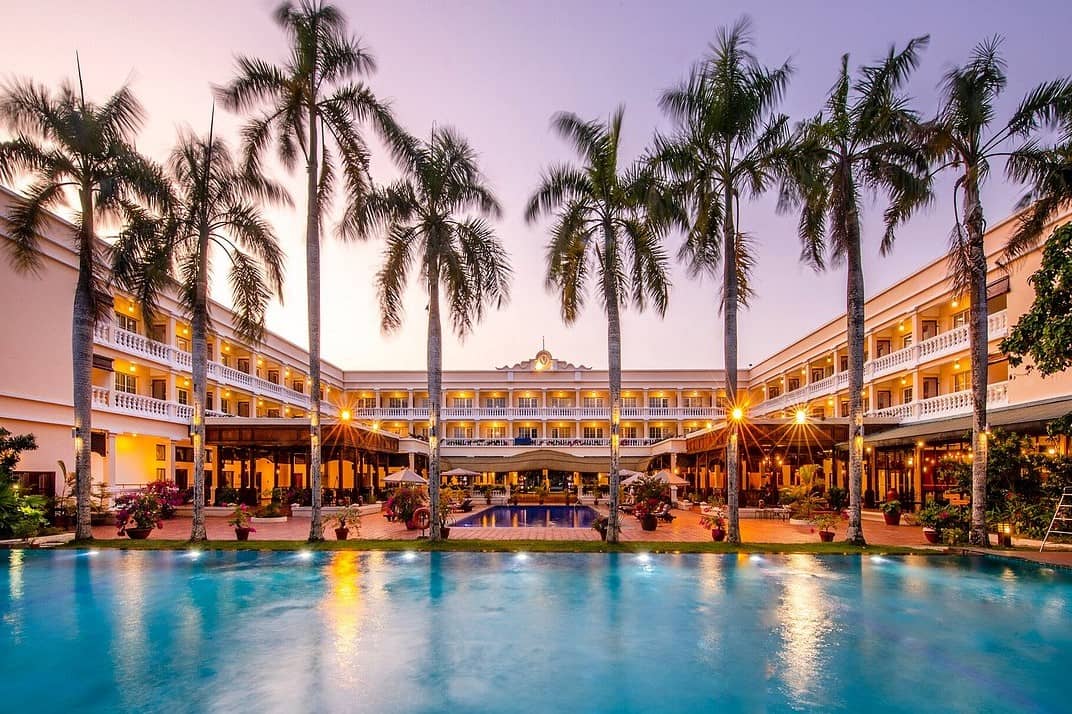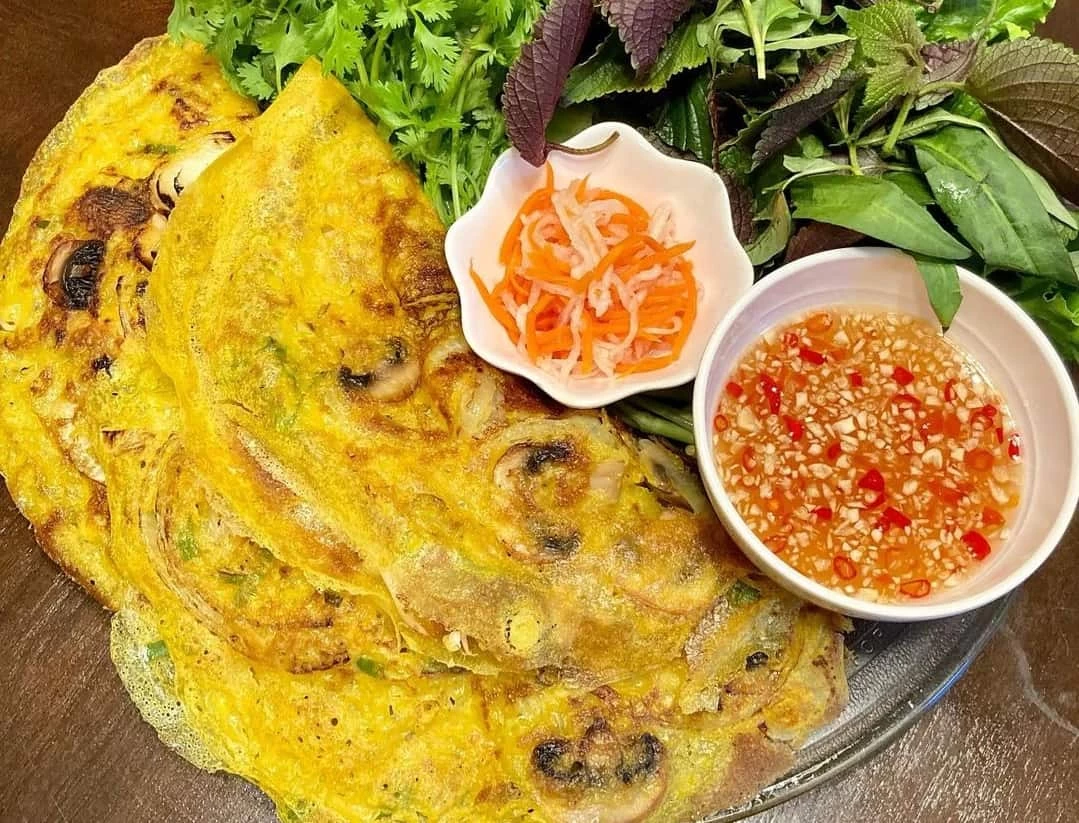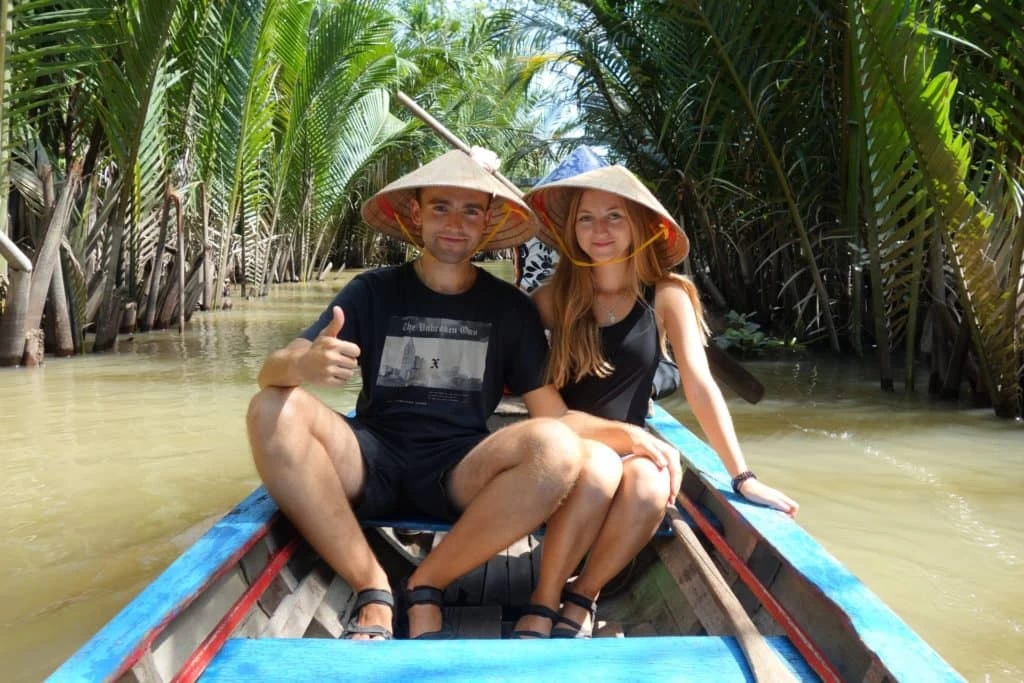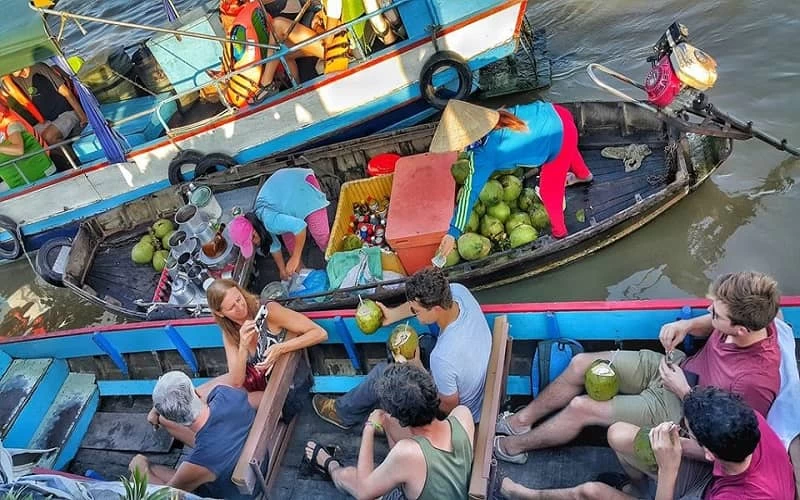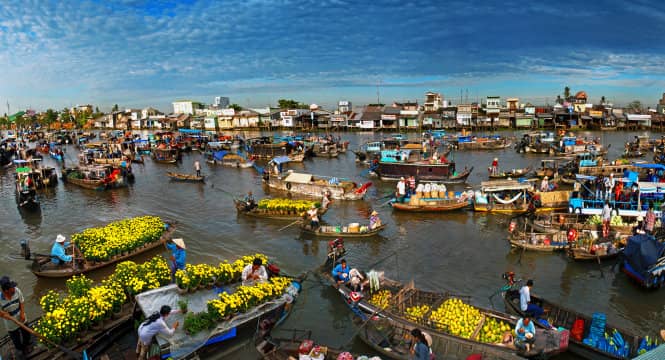
Let’s explore the beauty of Mekong Delta culture!
Mekong Delta culture is a fascinating blend of traditions, customs, and lifestyles shaped by the region’s unique geography. Visitors to the region can immerse themselves in the vibrant Mekong Delta culture through its traditional festivals, local cuisines, and art forms, offering an authentic experience of southern Vietnamese heritage. Follow Ula Travel today to discover the beauty of Mekong Delta culture.
I. Overview of the Mekong Delta Region
The Mekong Delta is characterized by its vast lowlands and intricate water systems, making it one of Vietnam’s most productive agricultural regions. It encompasses 13 provinces, including Can Tho, An Giang, Tien Giang, and Ben Tre, each contributing to the region’s cultural diversity.
Life here is deeply intertwined with the water, with floating markets, stilt houses, and boat-based transportation playing a vital role in daily activities. The delta’s population is a blend of several ethnic groups, including the Kinh, Khmer, and Cham people. This multicultural composition adds layers of richness to the region’s traditions, languages, and religious practices.
II. History and Cultural Origins
1. Historical Background of Mekong Delta
The Mekong Delta has a rich history shaped by its geographical significance and early settlements. The region, also known as the “Nine Dragon River Delta,” is named after the branches of the Mekong River that fan out across the landscape, creating a fertile area ideal for agriculture and human habitation.
Historically, the area was part of the ancient Funan Kingdom (1st to 6th century CE), which was a significant center for trade and cultural exchange in Southeast Asia. The Funan civilization was influenced by Indian culture, evident in early architectural and religious practices. After Funan declined, the Chenla Kingdom emerged, continuing the Indian cultural legacy.
By the 17th century, the Mekong Delta became part of Vietnamese territory through southern expansion. Before this expansion, the area was primarily inhabited by the Khmer people. Vietnamese settlers, alongside Chinese immigrants, transformed the region into a major agricultural hub, particularly for rice cultivation.
2. Influence of Vietnamese, Khmer, and Chinese Cultures
The cultural diversity of the Mekong Delta is a result of the harmonious blend of Vietnamese, Khmer, and Chinese influences. The cultural diversity of the Mekong Delta arises from the blend of Vietnamese, Khmer, and Chinese influences. The Vietnamese majority introduced rice farming, stilt houses, and folk music like “Don Ca Tai Tu.”
The Khmer people, especially in Tra Vinh and Soc Trang, contribute Theravada Buddhist temples, Chol Chnam Thmay celebrations, and ornate pagodas. Chinese settlers, arriving mainly in the 18th century, enriched trade and cuisine with dishes like Hu Tieu and mooncakes while establishing assembly halls and festivals such as the Mid-Autumn Festival.
III. Traditions and Customs of Mekong Delta Culture
1. Floating Markets
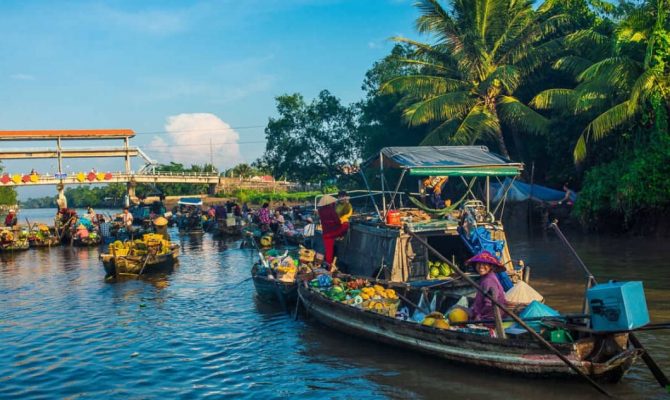
Floating markets are places of cultural exchange between regions of the Mekong Delta.
Floating markets are an iconic cultural symbol of the Mekong Delta, representing the region’s strong connection to its waterways. These bustling markets, such as Cai Rang and Phong Dien, have existed for centuries as essential trading hubs where locals buy and sell fresh produce, seafood, and handicrafts directly from their boats. Vendors often hang samples of their goods on long poles for easy visibility, a practice unique to this region.
Beyond commerce, floating markets serve as vital social spaces where communities gather, exchange news, and preserve cultural identity. The markets also attract tourists eager to experience the vibrant atmosphere and local delicacies, such as hu tieu (noodle soup) and banh xeo (Vietnamese pancake), prepared on small boats.
Click here: Mekong Delta Tour Package
2. Water- Based Lifestyle
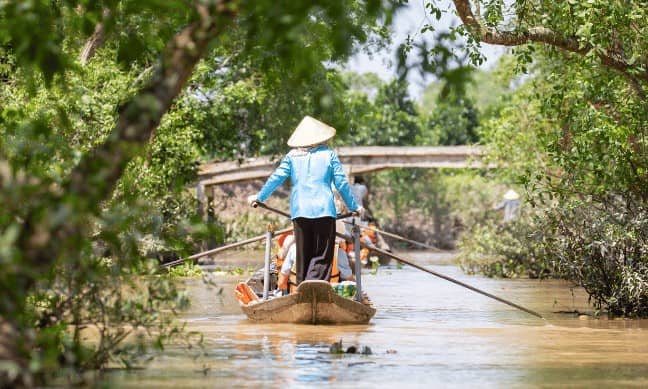
The lives of Mekong Delta people are closely linked to rivers.
The water-based lifestyle in the Mekong Delta is deeply tied to the region’s geography, with vast networks of rivers, canals, and swamps. Many homes are built on stilts or floating rafts to adapt to seasonal flooding, demonstrating resilience and ingenuity.
Cultural practices have evolved around the water, including folk songs and dances inspired by the rhythms of river life. The Delta’s traditional music, such as “Don Ca Tai Tu,” often tells stories of love, nature, and rural life, reinforcing the community’s bond with their environment.
3. Traditional Clothing
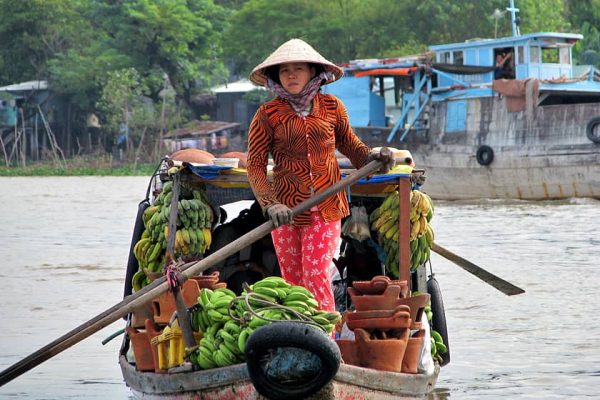
Traditional costumes in Mekong Delta.
The traditional clothing of the Mekong Delta reflects the region’s simplicity and agricultural roots. Women often wear the ao ba ba, a loose-fitting silk blouse paired with long trousers, designed for comfort and practicality during daily work. The conical hat remains a staple accessory, protecting wearers from the sun during farming and river activities.
IV. Art and Handicrafts
1. Traditional Crafts
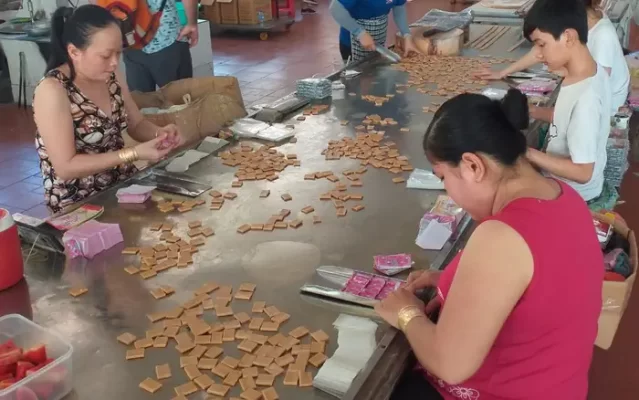
Ben Tre is famous for coconut candy production.
The Mekong Delta is renowned for its diverse range of traditional crafts, many of which are closely tied to local resources and historical practices. These crafts not only reflect the creativity of the people but also play a vital role in the local economy and cultural preservation.
Coconut Candy Making:
- Coconut candy production is a signature craft of Ben Tre Province, often called the “Coconut Kingdom” of Vietnam.
- The process involves grating fresh coconut meat, extracting its milk, and then cooking it with sugar until it thickens into a chewy, sweet confection. The mixture is then poured into molds, cut into small squares, and wrapped in edible rice paper.
- Visitors can explore coconut candy workshops where they can observe the entire production process and taste the candies fresh from the source.
Weaving:
- Traditional weaving in the Mekong Delta includes both silk and mat weaving, with the latter being particularly prominent in provinces like An Giang and Dong Thap.
- Mat weaving involves using reeds or sedge grass, dyed in vibrant colors, to create mats used for sleeping or ceremonial purposes.
- Silk weaving, although less common, showcases intricate craftsmanship with delicate patterns, often influenced by Khmer and Cham cultural motifs.
Pottery:
- Pottery making in the Mekong Delta is deeply connected with the Cham ethnic community, particularly in Vinh Long and An Giang provinces.
- Artisans create both functional and decorative ceramics, using clay sourced from the riverbanks. The products often feature hand-carved patterns and traditional techniques, such as wood-firing kilns.
You might be like: Discover The Ho Chi Minh City to Mekong Delta Tour
2. Folk Music
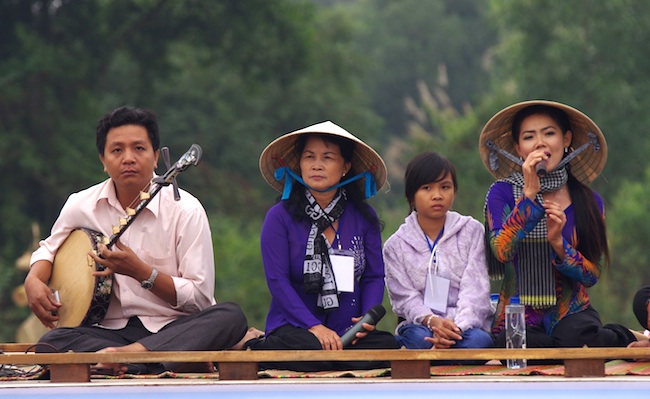
Don Ca Tai Tu is a folk art form found only in the Mekong Delta.
The soul of the Mekong Delta’s artistic expression is best captured in its folk music, with Don Ca Tai Tu being the most prominent musical tradition in the region.
- Recognized as an Intangible Cultural Heritage by UNESCO, Don Ca Tai Tu is a form of chamber music originating from southern Vietnam.
- Performances typically involve a small ensemble where musicians and singers collaborate in a free-flowing, improvisational style. The lyrics often express themes of love, rural life, and nature.
- Don Ca Tai Tu is often performed during festivals, family gatherings, and community celebrations, where audience interaction is encouraged, making it a dynamic cultural experience.
V. Mekong Delta Cuisine
1. Signature Dishes of the Mekong Delta
The Mekong Delta is famous for several signature dishes that have become iconic representations of the region’s culinary identity:
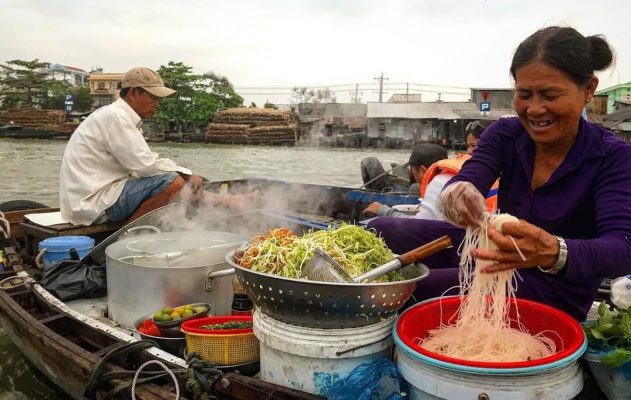
You must try Hu Tieu on the Mekong River.
- Hu Tieu: This savory noodle soup is a staple in the region, made from a delicate pork or seafood broth, often accompanied by rice noodles, shrimp, pork slices, and quail eggs. The dish originated from Chinese-Cambodian influences and has evolved with local flavors, including variations such as Hu Tieu Nam Vang and Hu Tieu My Tho.
- Banh Xeo (Crispy Vietnamese Pancake): A highlight of the Mekong Delta, Banh Xeo is a rice flour pancake infused with turmeric, creating its signature yellow hue. It is stuffed with ingredients like shrimp, pork, bean sprouts, and mushrooms, then folded and served with fresh herbs and fish sauce. The use of locally grown rice flour and garden-fresh herbs reflects the Delta’s agricultural richness.
- Elephant Ear Fish (Ca Tai Tuong Chien Xu): This visually striking dish features a whole Elephant Ear Fish, deep-fried to a crispy perfection. It is commonly served upright at the table with rice paper, herbs, and vegetables for rolling, accompanied by a tangy dipping sauce. This dish showcases the abundance of freshwater fish from the Mekong River and its surrounding canals.
Click here: Best Mekong Delta Cuisine – The Ultimate Travel Guide 2025
2. Food Tours and Authentic Experiences
Exploring the Mekong Delta’s culinary culture is best experienced through guided food tours and local markets, where visitors can engage directly with traditional cooking methods and authentic dishes.
- Floating Markets: Places like Cai Rang and Phong Dien offer a unique food experience where vendors sell hot bowls of Hu Tieu and freshly cut tropical fruits from their boats.
- Home-Cooked Meals: Many local families welcome tourists into their homes for cooking classes, showcasing how to prepare Banh Xeo or Elephant Ear Fish in a traditional setting.
- Fruit Gardens and Orchards: Visitors can explore fruit farms, picking and tasting seasonal produce while learning about their culinary uses.
VI. Mekong Delta Festival
1. Ok Om Bok Festival
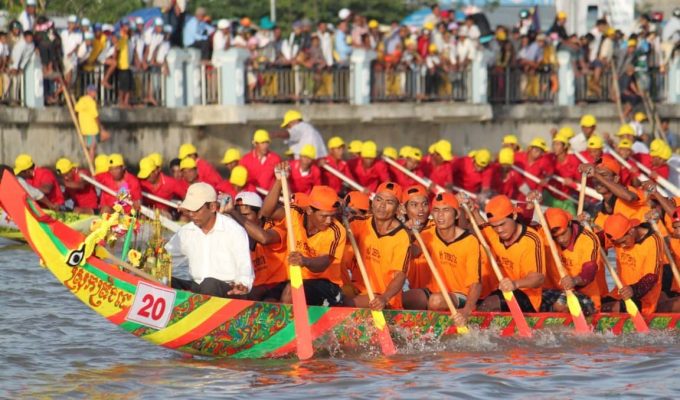
Ok Om Bok Festival
The Ok Om Bok Festival is a prominent cultural event celebrated by the Khmer ethnic group in the Mekong Delta, particularly in Tra Vinh and Soc Trang provinces. Held annually in the lunar month of October (around November in the Gregorian calendar), it honors the Moon God and marks the end of the harvest season.
Rituals and Activities:
- Moon Worship Ceremony: Families gather to make offerings of young rice, bananas, coconuts, and other local produce while praying for prosperity and good harvests.
- Releasing Lanterns: Colorful lanterns made from bamboo and paper are released onto rivers and ponds as offerings to the Moon God.
- Cultural Performances: Traditional Khmer dances and music, including the vibrant Robam and Chhay-dam drum performances, add to the festive atmosphere.
- Ngo Boat Racing: The highlight of the festival, this event involves long, elaborately decorated boats with teams of rowers competing in an intense race, symbolizing unity and strength within the community.
Start your journey with: Best of Southern Vietnam
2. Chol Chnam Thmay (Khmer New Year)
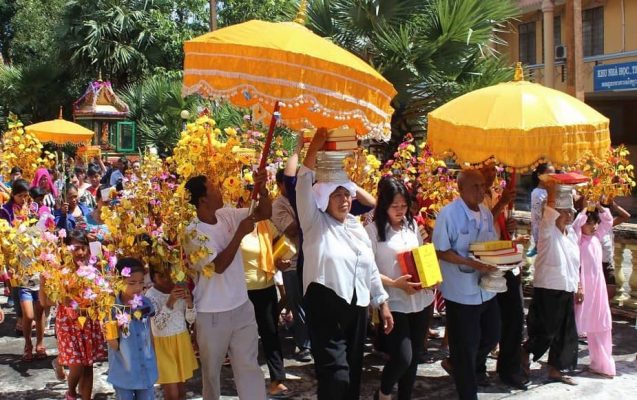
Chol Chnam Thmay is the Khmer New Year festival.
Chol Chnam Thmay, or Khmer New Year, is one of the most important festivals for the Khmer people in the Mekong Delta, celebrated in mid-April. This three-day festival marks the end of the old year and the beginning of a new one, following the traditional Buddhist calendar.
Key Rituals and Customs:
- Day 1 (Maha Songkran): Families clean their homes and visit pagodas to offer food and donations, believing it brings good luck and blessings for the new year.
- Day 2 (Vanabot): People continue visiting pagodas for ceremonies where they build sand stupas and offer alms to monks.
- Day 3 (Leung Sakk): The final day involves water blessings, where elders sprinkle water on statues of Buddha and younger family members to symbolize purification and renewal.
Cultural Highlights:
- Traditional Games: Tug of war, traditional Khmer dances, and folk games entertain festival-goers.
- Community Feasts: Large communal meals with Khmer specialties such as Num Banh Chok (Khmer noodle soup) and sticky rice cakes.
VII. Best Places to Experience Mekong Delta Culture
1. Can Tho and Its Floating Markets
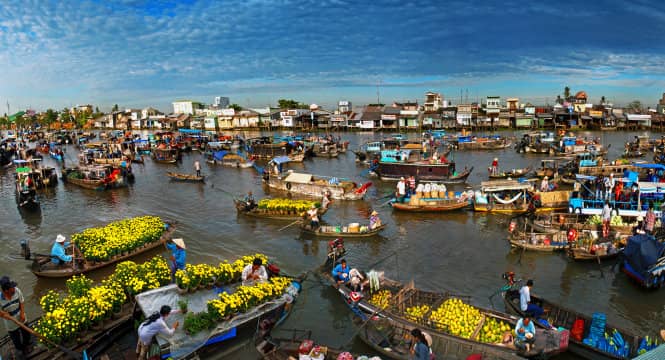
The bustle of Cai Rang Floating Market.
Can Tho, often considered the heart of the Mekong Delta, offers a unique cultural experience with its floating markets, traditional river life, and vibrant local communities. The city is most famous for the Cai Rang Floating Market, the largest and most iconic market in the region.
Visiting this market early in the morning, you will see boats selling fresh fruits, vegetables, and regional specialties. The bustling activity of boat vendors, the aroma of fresh produce, and the vibrant colors of the market provide a deep connection to the traditional way of life in the Mekong Delta.
Apart from the markets, Can Tho is also home to several cultural landmarks. Binh Thuy Ancient House, a beautifully preserved colonial-era home, offers a glimpse into the region’s history and architecture. Visitors can also explore Ninh Kieu Wharf, a popular spot for both locals and tourists to enjoy the river breeze, watch the sunset, and take boat trips around the surrounding canals.
More details: Discover A Glimpse of The Mekong Delta
2. Ben Tre – The Land of Coconuts
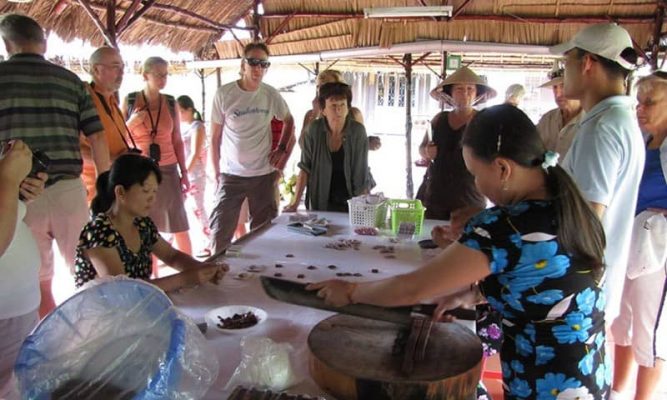
Tourists enjoy seeing coconut candy production.
Ben Tre, often called the “Land of Coconuts,” is known for its coconut plantations, river landscapes, and strong connection to local handicrafts. The province is famous for the coconut-based products that are produced here, from coconut candy to coconut oil, and these products are deeply embedded in the local economy and culture.
A visit to Ben Tre is incomplete without exploring its coconut orchards, where you can learn how coconuts are harvested and processed into a variety of products. Tourists can participate in workshops making coconut candy, which is a popular delicacy, and experience the slow-paced life of the countryside by taking boat trips along the narrow canals.
Learn more about: Top 7 Best Places to Visit in the Mekong Delta
VIII. Practical Travel Tips
1. Best Time to Visit Mekong Delta
The dry season, from November to April, is the best time to visit the Mekong Delta. During this period, the weather is cooler and more comfortable for outdoor activities, such as boat tours and market visits.
The wet season (May to October) brings heavy rains, which may lead to flooding in certain areas, making travel more challenging. However, the wet season also offers a unique charm, as the lush greenery is vibrant, and the rivers are fuller, offering a different perspective of the delta’s landscape.
2. Recommended Cultural Tours
- Cai Be Floating Market Tour: One of the most famous floating markets in the Mekong Delta, Cai Be is a vibrant place where locals trade fresh produce, fruits, and crafts from boats. A tour here allows you to explore the waterways, learn about traditional trade practices, and witness the daily rhythm of life on the water.
- Traditional Village Tours in Ben Tre: Ben Tre is renowned for its coconut trees and traditional craft villages. Visit local artisans who create intricate handicrafts from coconut shells, and take a boat ride along the river to observe rural life. A tour here will also include stops at the famous coconut candy factories.
- Can Tho and the Floating Market: The largest city in the delta, Can Tho, offers a deep dive into Mekong Delta life. The floating market at Cai Rang is the highlight, and a morning tour will give you a glimpse into the local economy and lifestyle. In addition to the market, a visit to the ancient pagodas and local orchards adds to the cultural experience.
In conclusion, the Mekong Delta culture is a treasure, offering a unique experience with its rich traditions, vibrant communities, and stunning landscapes. From the lively floating markets to the peaceful rural villages, the region’s diverse ethnic groups, including the Kinh, Khmer, and Chinese, create a colorful cultural tapestry.
For those seeking a cultural adventure, the Mekong Delta offers a profound sense of connection to the past, as well as an opportunity to witness how the landscape continues to shape the lives of its people. The region serves as a perfect destination for anyone looking to immerse themselves in authentic Vietnamese culture, away from the hustle and bustle of the cities.
See more: Mekong Delta travel tips



